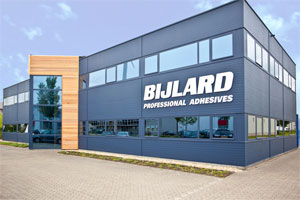Wooden flooring? Prevent a false start.
Proper preparation gets the job done much more easily, and also prevents complaints. That preparation begins by assessing the quality of the subfloor.In the Netherlands, various types of subfloor can be found, including sand/cement, anhydrite, concrete, wood etc. These may or may not include underfloor heating or cooling. To install wooden flooring optimally, it's important to look before you leap. That's why the first step is to assess the subfloor. This is because we know the conditions in which our adhesives work most effectively.
To identify and assess the subfloor and the steps to be taken, we have developed a handy Parquet Adhesive Guide (see www.bijlard.com).
Making your job easier
Bijlard International also offers floor inspections. We want to make the job of parquet installers easier – and any professional anywhere the Netherlands can request such an inspection. Our thorough inspection will result in a sound assessment of the subfloor. This gives you the certainty you're looking for in business, because no one wants to deal with complaints later. By investing a little more time in the preparations, you can reap the rewards afterwards. All our account managers have access to equipment and knowledge to carry out the analysis properly.
Challenges
All sorts of problems – or rather challenges – can arise in relation to subfloors. I'll focus on two of these. Firstly, the floor may have a tendency to crumble. This means that the top layer of the subfloor was dried too rapidly, and contains too little binding agent. This results in a top layer that is insufficiently strong to handle the forces that the wooden flooring and adhesive exert on the subfloor. In many cases, the top layer must first be removed and then relaid. Secondly, too much residual moisture may be present in a newly-laid floor. Although it may appear dry, too much moisture remains deeper in the subfloor. In such cases, there is a high chance that the adhesive will detach from the subfloor in more and more places.
Practical example
That's the theory. What have we come up against in practice? I'll give you an example. Our account manager Dick Heijster recently carried out an inspection of an anhydrite floor with underfloor heating in a newly-constructed house in Scheveningen. The steps required to carry out a proper inspection can be seen from photo 1.
The floor is first brushed with a steel brush (photo 1). An anhydrite floor is always delivered with a layer of laitance, which must be sanded off until the black specks become visible. The strength of the top layer is measured with a scratch testing pen (photo 2). The moisture content of the subfloor is then measured with a moisture meter (photo 3). To be certain, 50 g of anhydrite is removed from the floor (photo 4), to allow the exact moisture percentage to be measured with a CM moisture meter (photos 5 and 6). If the CM measurement shows that the moisture content is too high, extra steps are required. In such cases, a construction heater or dehumidifier should be used. If underfloor heating is installed, the system start protocol must be carried out. With underfloor heating, the correct value is 0.3% CM or lower, and 0.5% CM or lower without underfloor heating.
Once the subfloor has been inspected and approved, we recommend applying PU-Multiprimer FLOOR to strengthen the top layer and to seal in the dust (as anhydrite continues to give off dust). Never use a vapour barrier with this type of subfloor, as residual moisture will accumulate under the vapour barrier. This can cause weak spots (rotting) in the anhydrite, which will unfortunately result in the wooden flooring becoming loose.
Would you like to know more about subfloor testing before installation, or about a specific product? Then please don't hesitate to contact us. You can also download the handy glue guide form our site.
https://www.bijlard.com/upload/sidebar_download/2_ParketLijmwijzer-GBweb.pdf
Photo 1 Photo 2 Photo 3
Photo 4 Photo 5 Photo 6
Date: 10-12-'18
< Back to overview

